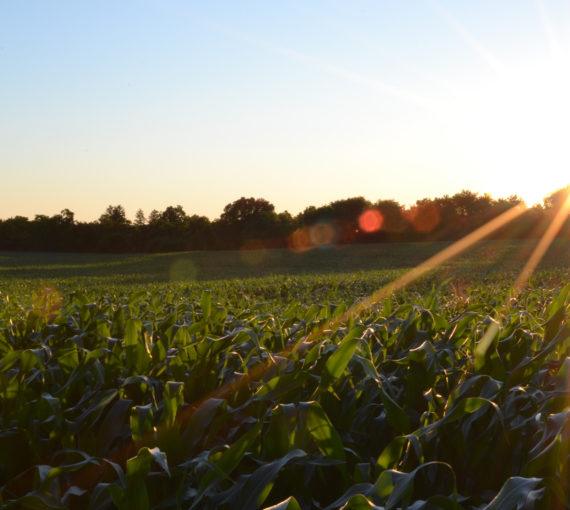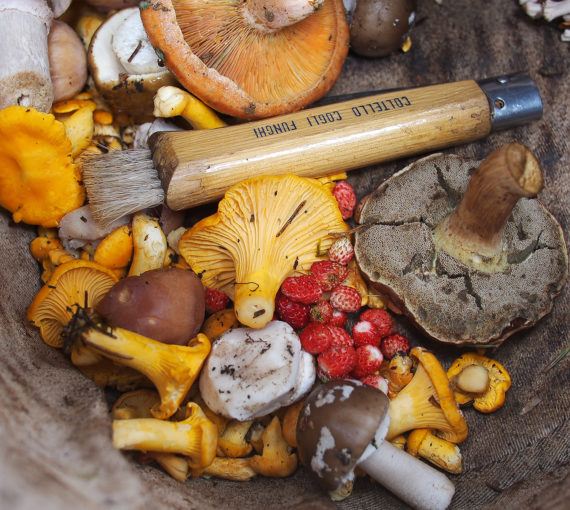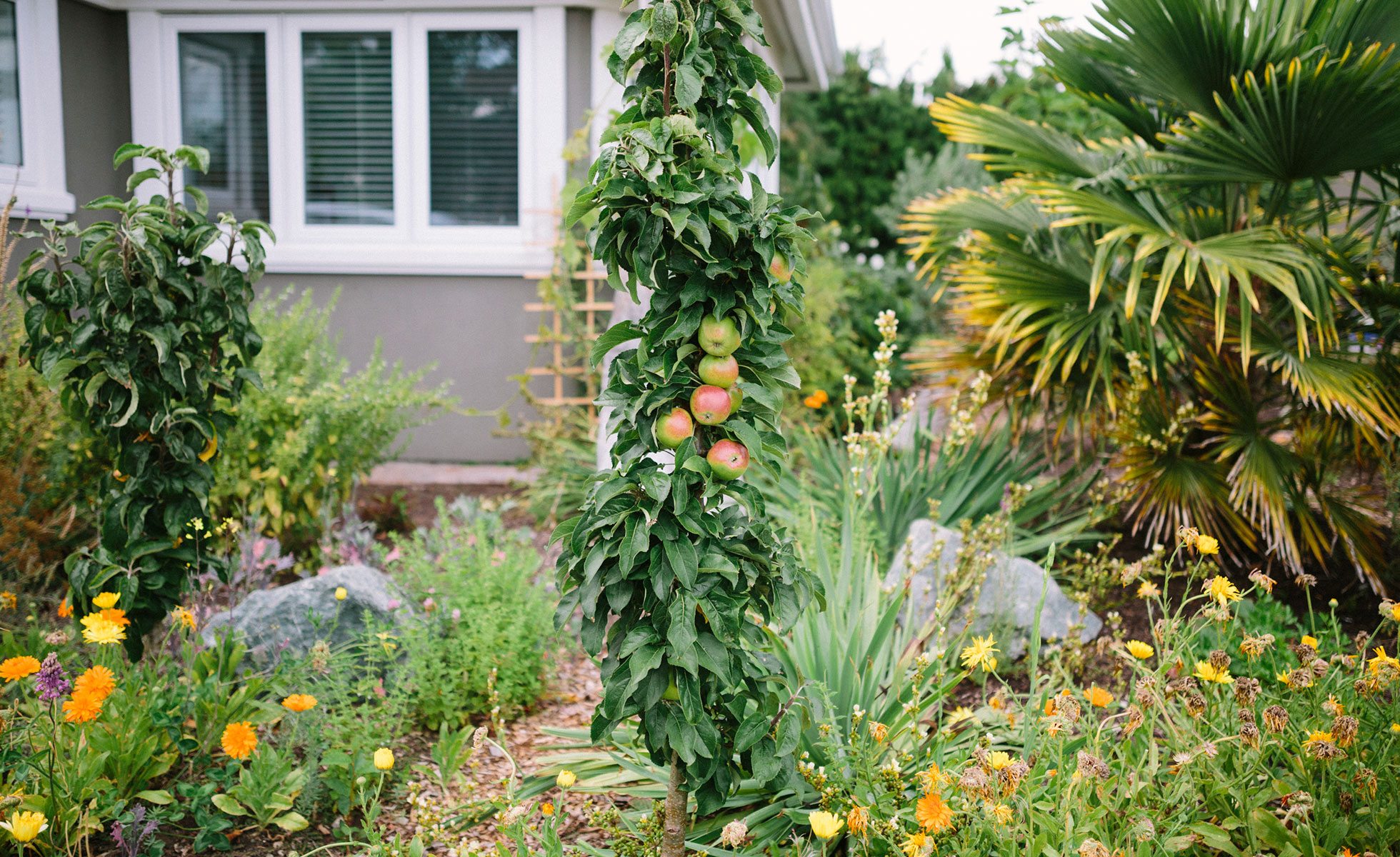
A perennial fruit and vegetable garden by Hatchet & Seed. (Photo: Kelly Brown)
Want to eat more locally grown foods? Reap the positive benefits of gardening? Grow edible perennials!
Whether you’re a seasoned gardener or just starting out, you’ll elevate your culinary experiences by adding perennial herbs, flowers, vegetables, fruits and nuts you can harvest year after year. It’s good for your wallet, wellbeing and the planet.
What’s a perennial?
Annuals (e.g., peas), complete their life cycle in a single growing season. Biennials (e.g., leeks) take two years to complete their life cycle. Perennials live for more than two years. The best time to plant them is spring and fall. They grow and bloom during the spring and summer, die back in the fall and winter and then return from their rootstock the following spring.
Perennials are great because they:
- Keep coming back and can be left all winter.
- Withstand pests better than annuals.
- Build and improve soil quality.
- Don’t need tilling, leaving mycelial culture (mushrooms and other fungi) and soil structure intact.
- Increase aeration and water absorption.
- Create compost, add to topsoil and bring up nutrients from deep down when dropped leaves die back each year.
- Are “edimentals” (edible ornamentals) — delicious and beautiful!
- Are often long-lived — e.g., asparagus can live up to 40 years!
Support pollinators by planting native edible perennials
Try to plant edible perennials native to your ecoregion. They will be better adapted to local conditions and support pollinators’ important work.
Native plants evolved over millennia along with other plants species, animals, fungi and bacteria in the presence of native soil and climatic conditions. Pollinators evolved to depend on native plants in their specific regions for food and habitat.
Help support the health and diversity of local ecosystems while creating beautiful, beneficial pollinator habitat by planting native edible perennials (and wildflowers, trees and shrubs!) for your ecoregion.
Perennials marked with an asterisk (*) below are native, or have a species native, to a region in Canada. Prioritize plants native to your ecoregion, if possible.
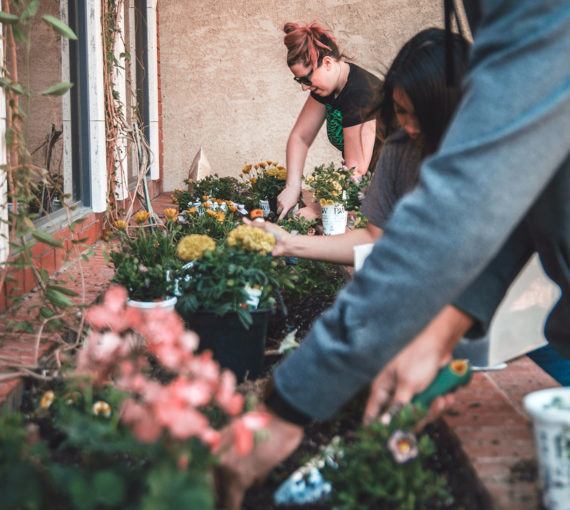
How to source native seeds and plants
Whether you’re creating a vegetable garden, pollinator paradise, wild bee sanctuary or butterfly garden, there are many creative — often free — ways to source native seeds and plants.
Perennial herbs and edible flowers
Spice up salads and enhance your culinary creations with perennial herbs and edible flowers! Best part? You can even grow some of these on a windowsill.
- Chicory (Cichorium intybus)
- Caucasian spinach (Hablitzia tamnoides)
- Chives (Allium schoenoprasum)*
- Echinacea (Echinacea purpurea)*
- Fennel (Foeniculum vulgare)
- Field mint (Mentha arvensis)*
- Good King Henry (Chenopodium bonus-henricus)*
- Hops (Humulus lupulus)*
- Meadow garlic (Allium canadense)*
- Nodding wild onion (Allium cernuum)*
- Oregano (Origanum vulgare)
- Pasture rose (Rosa carolina)*
- Rosemary (Salvia rosmarinus)
- St. John’s wort (Hypericum perforatum)
- Sorrel (Rumex acetosa)*
- Swamp rose (Rosa palustris)*
- Wild bergamot (Monarda fistulosa)*
- Turkish rocket (Bunias orientalis)
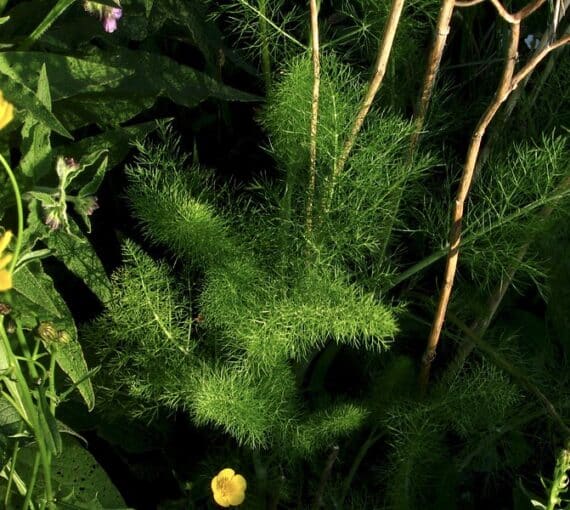
Tip!
If you eat all the edible parts, like the root and bulb, of some perennial plants (e.g., fennel, ferns, etc.), you’ll have to replant next season.
Photo: Jon Anderson via Flickr
Perennial vegetables
Enjoy a continuous supply of vegetables year after year. If you live in an area with harsh winters, choose cold-hardy varieties.
- Asparagus (Asparagus officinalis)
- Cinnamon yams (a.k.a. air potato or Chinese yam Dioscorea batata)
- Daubenton kale (Brassica oleracea ramosa)
- Elephant garlic (Allium ampeloprasum var. ampeloprasum)
- Fiddlehead ferns (Matteuccia struthiopteris)*
- Jerusalem artichoke (Helianthus tuberosus)*
- Leaf celery (a.k.a pink plume Apium graveolens)
- Perennial onion (Allium fistulosum)*
- Hardy Canuck parsnip (Pastinaca sativa)
- Skirret (a.k.a. sweet root Sium sisarum)
- Sweet potato (Ipomoea batatas)
- Rhubarb (Rheum rhabarbarum)*
- Tuberous pea (Lathyrus tuberosus)
Perennial fruits
Growing fruit-bearing trees, shrubs, vines and bushes requires patience and care. Many perennial fruit trees take a few years to become fully productive.
- American plum (Prunus americana)*
- Black cherry (Prunus serotina)*
- Black raspberry (Rubus occidentalis)*
- Black elderberry (Sambucus canadensis)*
- Canadian plum (Prunus nigra)*
- Chokeberry (Aronia melanocarpa)*
- Common blackberry (Rubus allegheniensis)*
- Common apple (Malus pumila)*
- Frost grape (Vitis riparia)*
- Figs (Ficus carica)
- Goji berries (Lycium barbarum)
- High-bush cranberry (Viburnum tilobum)*
- Lingonberry (Vaccinium vitis-idaea)*
- Running serviceberry (Amelanchier stolonifera)*
- Pawpaw (Asimina triloba)*
- Pin cherry (Prunus pensylvanica)*
- Saskatoon serviceberry (Amelanchier alnifolia)*
- Serviceberry (Amelanchier canadensis)*
- Smooth serviceberry (Amelanchier laevis)*
- Smooth blackberry (Rubus canadensis)*
- Sweet crabapple (Malus coronaria)
- Staghorn sumac (Rhus typhinia)
- Wild strawberries (Fragaria virginiana)*
- Wild black currant (Ribes americanum)*
- Wild red raspberry (Rubus idaeus)*
- Velvet leaved blueberry (Vaccinium myrtilloides)*
Perennial nuts
Like growing edible perennial fruits, nuts are a labour of love and patience. Don’t get discouraged if your tree doesn’t yield nuts for a few years!
- American hazel (Corylus americana)*
- Beaked hazel (Corylus cornuta)*
- Butternut (Juglans cincera)*
- Black walnut (Juglans nigra)*
- Bladdernut (Staphylea trofolia)
- Chufa (a.k.a. tiger nut Cyperus esculentus)
- Earth chestnut (Conopodium majus)
Get the LawnShare toolkit
Unlock the untapped potential of your lawn and create healthier ecosystems.

